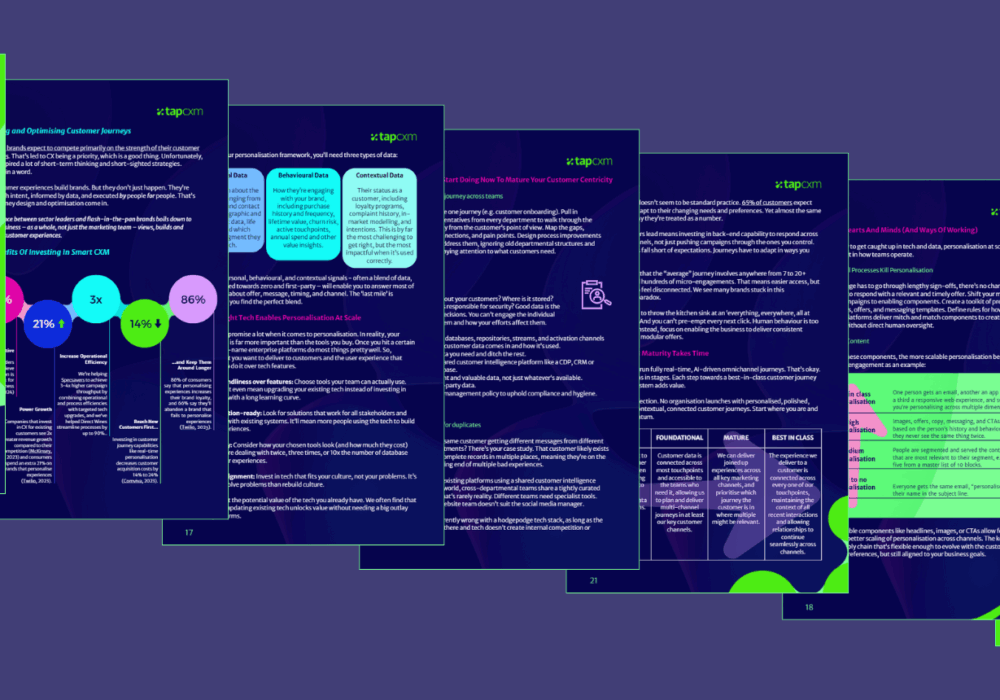Our curated insights on customer experience
Explore our thoughts on marketing strategy, data, technology and processes so you can deliver the most valuable customer experiences.
Articles & News

20th Oct 2025
Why is Customer Intelligence Important?

10th Oct 2025
Guide to Designing & Optimising Customer Journeys

7th Oct 2025
How Brands Build Customer-Centricity

29th Sep 2025
What We Learned by Running an Agentic AI Hackathon

23rd Sep 2025
B2C vs B2B Customer Experience Management

16th Sep 2025
Navigating The Risks Of Agentic AI In CXM

20th Aug 2025
Account-Based Marketing Strategy: Where To Start

14th Aug 2025
Your Practical CDP Implementation Guide

22nd Jul 2025


